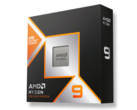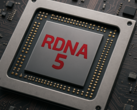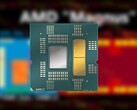According to serial leaker Moore’s Law Is Dead, for the upcoming Zen 6 Medusa Halo and Medusa Halo Mini APUs, AMD is changing the way it designs the iGPU component of high-end mobile APUs. Unlike the current Strix Halo APUs, the Medusa Halo and the Medusa Halo Mini are said to employ the “AT3” and the “AT4” iGPU dies that AMD is also going to use in the discrete RDNA 5 desktop cards.
AT4 RDNA 5 GPU specs
The “Alpha Trion 4” or the AT4 RDNA 5 GPU reportedly packs 24 Compute Units alongside a possible 10 MB L2 cache and 8x PCIe Gen 5 lanes. The memory situation for the affordable card that eventually features this GPU will be quite interesting, as the leaker lists a 128-bit LPDDR5X memory controller for the discrete GPU and not the typical GDDR solution that we are used to seeing in desktop boards.
MLID alleges that the RDNA 5 card using AT4 will have laptop memory and could, theoretically, be outfitted with as much as 128 GB of VRAM. More realistically, however, the leaker posits 12-24 GB of VRAM.
For performance, MLID estimates that the RDNA 5 desktop board with AT4 will “roughly” fall somewhere between the RTX 3060 and the RTX 4060. So, it is fair to say that, in 2027, this desktop board will be super affordable, potentially occupying the same position as the RX 6500 XT.
AT3 RDNA 5 GPU specs
The AT3 RDNA 5 GPU, per MLID, is much more powerful than AT4, courtesy of double the CUs and more memory bandwidth. The GPU reportedly features 48 CUs and a 384-bit LPDDR6 or a 256-bit LPDDR5X memory controller. This means that, like AT4, the AT3-based RDNA 5 desktop card is also expected to utilize laptop LPDDR memory instead of GDDR.
While theoretically, the AT3 RDNA 5 board could enjoy as much as 512 GB of VRAM, MLID expects the figure to be somewhere between 16-32 GB for a desktop gaming card.
Performance-wise, MLID expects the AT3 GPU to enjoy rasterization between the RTX 4070 and the RX 9070, and much better RT performance. This is a pretty wide range, as the RX 9070 is around 37% faster than the RTX 4070 per our testing.
All in all, MLID’s leaked details about budget-friendly RDNA 5 GPUs are quite interesting and bold, especially the laptop memory instead of GDDR and the sharing of GPU chiplets with the Medusa Halo APUs. So, until we have more reports that substantiate these claims, it is best to take them with extreme caution.
Source(s)
Moore's Law Is Dead on YouTube, Teaser image: Sapphire, Avinash Kumar on Unsplash, edited
























